Sony VAIO VGN-X505VP – Ultra Slim Notebook Review
Sony VAIO VGN-X505VP – Ultra Slim Notebook
Sony has created the most stunning mobile computer known to man. The VAIO X505VP goes way beyond small and stylish, in fact it deserves a new definition of its own.
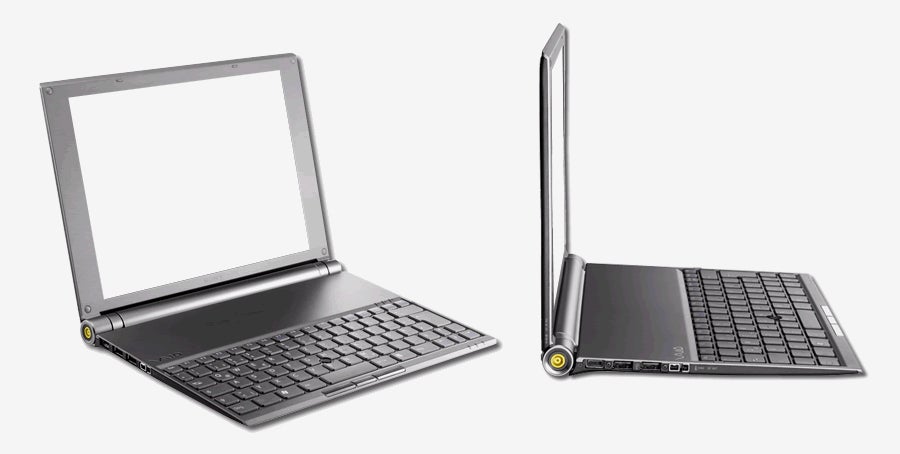
Verdict
Key Specifications
- Review Price: £1999.00
Let’s get the obvious out of the way first. This latest VAIO from Sony is, without a shadow of a doubt, the coolest notebook computer ever. It’s that simple. This is the kind of product that just stops people in their tracks when they see it. Pull this out of your bag in an aiport departure lounge, and your fellow passengers will turn green with envy, and shamefully hide their own big and heavy notebooks under the nearest chair.
Everyone that I showed the X505VP to just couldn’t take their eyes or their hands off it. I eventually had to take it home with me so that I could write this review, since every time I left it unattended in the office, someone couldn’t help picking it up and fondling it. It’s not surprising though; this notebook just begs to be picked up, touched and admired.
At it’s shallowest point the X505VP is only 11mm high when closed, while at the other end it’s still a svelte 21mm high. But it’s not just the height that’s impressive, the full dimensions are 256 x 208 x 11-21mm (WxDxH) and the weight is an unbelievable 822g. In reality, the VAIO X505VP is smaller and lighter than, well, than a notebook. And when I say notebook I mean a pad with pages of paper in it. I never thought it would be possible, but you can now carry a notebook computer around with you that is actually more convenient than a pad of paper and a pen. Of course the pad of paper won’t run out of battery power, but you’d be hard pushed to pick up your emails with it.
To help produce a notebook of such amazing weight and size characteristics, Sony has invested in some pretty exotic materials. With the inner chassis made from magnesium alloy and the outer panels constucted from moulded carbon fibre, the X505VP is light, but still very rigid. As a keen mountain biker I’m well aware of the impressive weight/strength and stiffness ratio of these materials, so I’m confident that despite it’s lightness, this little notebook should be very robust indeed. In fact, if Sony had thrown in some titanium, there’d be hardcore mountain bikers queueing up for these machines just to match their bikes.
In my opinion the most important aspect of a notebook is ergonomic usability. The points at which you interact with a notebook are paramount to a productive relationship with the device, so the screen, keyboard and pointing device all have to be of a high enough standard to ensure ease of use, instead of consistent frustration.
When I first saw the X505VP I figured that the keyboard would have to be apalling to get it to fit inside such a small chassis, and upon opening the device up and seeing the keyboard that initial opinion was reinforced. All the keys look more like buttons. In fact, the keyboard looks like something you may have found on an early PDA, where just having all the keys there was the important part, not whether it was possible to type comfortably or not. With some trepidation I fired up Word and tried typing on the keyboard. It was at this point that I realised my assumption about keyboard quality could not have been more missplaced. It’s true that the keys are small, but they are perfectly spaced and I found it possible to type at pretty much full speed without too much practice. Amazingly there is a decent amount of travel in the keys, although I can’t for the life of me figure out how Sony has achieved this.
The keys nearest the typer are housed in a chassis that’s about half a centimetre high, so how does it feel like there is more key travel than on some full size notebooks I’ve used? Sony has, quite simply performed a miracle with this keyboard, because despite the size limitations, it’s a joy to type on. Sony has even assured that the Return and Backspace keys are large, while the Ctrl key is where it’s supposed to be at the bottom left with the Fn key to the right of it. There’s even a correctly configured and positioned cursor key arrangement. When I first laid my hands on the keyboard I was afraid that the Spacebar was too small and that I’d find myself missing it. However, in practice, the Spacebar is fine despite its reduced dimensions.
To keep wasted space to a minimum, Sony hasn’t gone down the touchpad route and instead has placed a trackpoint device between the G, H and B keys. Having been used to the IBM TrackPoints it took a little while to get to grips with this one since it is set lower into the keyboard. That said, once I’d been using the X505VP for a while I had no problem manipulating the pointer, and my right index finger fell naturally into position whenever I needed it. The buttons for the trackpoint are located below the Spacebar, at the very edge of the chassis. Again, I initially thought that this would be a problem, thinking that my thumb could inadvertantly press the buttons when I was attempting to hit the Spacebar. However, in practice I didn’t hit the buttons by mistake once.
The final part of the ergonomic trilogy is the screen, and with a unit this small you’re never going to get the kind of high resolution display that’s common place in notebooks today, but that is a sacrifice that you’re obviously willing to make for the sake of ultimate portability. The screen measures 10.4in and sports a resolution of 1,024 x 768. This is more than adequate for a device this size, although considering the space surrounding the screen I can’t help but think that it could have been made just a little bit bigger. In use the display is as good as you’d get in any notebook – it’s bright and vibrant and exhibited even lighting across the whole surface. For those of you who may be thinking that the screen is too small to work at comfortably, don’t worry. I have used this notebook for hours on end without the slightest hint of eyestrain. The only issue I would mention is that you have to have every window running full screen, but then that’s a comment that could be leveled at any 1,024 x 768 display.
So, with a chassis this small what could Sony have possibly squeezed inside? Well, quite a lot actually. The heart of the X505VP is a 1.1GHz Pentium M processor. But this isn’t a standard Pentium M, this is the Ultra Low Voltage (ULV) variant that draws even less power than the standard Pentium M. The ULV chip was designed specifically for ultra-portable units like this, where longer battery life was more important than raw power. Even so, considering the duties that an ultra-portable notebook has to perform, this little chip should be more than adequate. Backing up the CPU is 512MB of DDR memory, which again is pretty impressive given the size of the machine. However, there are no spare SODIM slots, so the 512MB is your lot. But you’re not likely to be using a notebook like this for heavy duty applications, so 512MB should be fine for the lifetime of the unit. Graphics come courtesy of the Intel 855GM motherboard chipset, so that’s one less component that Sony had to worry about fitting in. The most amazing part of the core configuration is the hard disk, because I just can’t see where it possibly fits. Of course it is a 1.8in drive rather than the 2.5in units seen in most notebooks, but I’m still stunned at the fact that Sony has managed to fit one inside such a slim chassis.
As far as sound goes, the only thing you’re likely to hear is the hard disk spinning. There isn’t a single fan inside the X505VP. Instead Sony has used something called a graphite heat diffusion sheet. This sheet draws heat away from the CPU and motherboard chipset; it is then radiated away through the chassis. It would appear that the main heat dissipation area is between the top of the keyboard and the bottom of the screen. This open area gets quite hot to the touch while the rest of the notebook remains surprisingly cool. With almost no heat radiating through the base of the chassis, you’ll have no worries when working with this notebook on your lap for extended periods.
Despite the slim casing there are still a fair few ports scattered around the X505VP. On the left side you’ll find two USB 2.0 ports, a four-pin FireWire port complete with DC power output, and a proprietary port. The latter accepts a dongle that gives you both D-SUB and Ethernet connections. On the right side there’s a headphone socket and a single Type II PC Card slot. Unfortunately the PC Card slot doesn’t have a spring loaded flap and instead you have to put a spacer in there when you’re not using a card. This is a little disappointing considering the superb design everywhere else, and it does mean that you could lose the spacer and end up with an unsightly hole in the side of your beautiful VAIO.
Of course with a machine this small you’re not going to get an integrated optical drive, but Sony has got this covered. Contrary to what you might have read elsewhere, the X505VP ships with a DVD writer that will burn to both DVD+R/RW and DVD-R/RW media. You can of course also write to CD-R/RW discs as well. Having a DVD writer bundled makes the X505VP a much more versatile machine, even if you leave the optical drive at home or in the office much of the time. The DVD writer requires no external power, instead drawing power from the DC output next to the four-pin FireWire port.
It’s unfortunate that the X505VP doesn’t have integrated WiFi, but Sony has supplied an 802.11g PC Card in the box. The card matches the design of the notebook perfectly, and the antena points upwards, so as not to add too much to the dimensions when inserted. In use, the PC Card worked flawlessly and hooked up to my home 802.11g network straight away.
The second PC card that you’ll find in the box is a memory card adapter, and for once Sony hasn’t assumed that the whole world has adopted MemoryStick. The adapter will accept MemoryStick, SmartMedia, SD and MMC cards. So, you should be able to transfer images from almost any digital camera, as long as you don’t have one using CompactFlash.
You get a stylish black carrying case for the X505VP that’s lined with velvet to keep it safe. The case has no handles but it’s designed to fit in your bag rather than be used as a bag. The case is surprisingly stiff and feels like it would protect the notebook well if you were silly enough to drop it. A similar case is supplied to house the accessories like the PC cards, cables and dongle. Strangely there’s no space in either case for the power supply, but I get the feeling that this little beauty is supposed to be carried with you at all times and used on battery power throughout the day.
Talking of battery power the X505VP managed just over two hours in the Mobile Mark battery rundown test. This isn’t the best battery life by today’s standards, but considering the size of this notebook, it’s pretty impressive. The battery is built into the hinge mechanism, just like with the original VAIO 505 and unclips simply in case you want to carry a spare with you. As for performance, the X505VP isn’t going to break any records, but the overall design of this machine almost transcends the question of performance. No one is going to buy this machine because of how it performs, people will buy it because they can’t help but give in to their desire to own it.
As well as Windows XP Professional, the X505VP ships with a full software suite. For office applications you get Microsoft Works 7, while the Adobe Companion Pack will take care of all your creative needs. This application suite from Adobe is exclusive to Sony VAIO products, and I’ve seen it shipping on all recent Sony notebooks. What you get is a copy of Adobe Premiere Standard, PhotoShop Elements 2.0, PhotoShop Album Starter Edition and Acrobat Elements to help you turn standard office documents into distributable PDF files.
Now, here comes the bit you’ve been waiting for, the price. With a ground breaking product like this you know that Sony is going to have to charge a premium for the R&D and the manufacturing costs. Well, despite wildly inaccurate reports elsewhere, Sony has quoted me a price of £1,999 for the X505VP, which, in my opinion is a bit of a bargain for such a technological marvel. It’s with this in mind that I’ve given the X505VP a Value rating of nine, since you simply can’t buy anything else like this, regardless of the price. And despite the fact that many notebooks have more features than the X505VP, none of them have managed to squeeze as much into such a tiny box, so again this little Sony grabs a nine out of ten in the Features score. But to be fair, all of this is pretty much moot, since the X505VP is something that you decide to either buy or not the minute you see it, and if you fall under its spell, factors like, price, performance and features just aren’t going to come into the equation.
”’Verdict”’
Words like beautiful, stunning and stylish do nothing to describe the X505VP, and even the pictures accompanying this review don’t do it justice. It’s not the fastest machine out there and the price isn’t insignificant, but what you’re getting is the pinnacle of mobile computing. One day all notebooks will look like this, and for me, that day can’t come soon enough.
(table:features2)
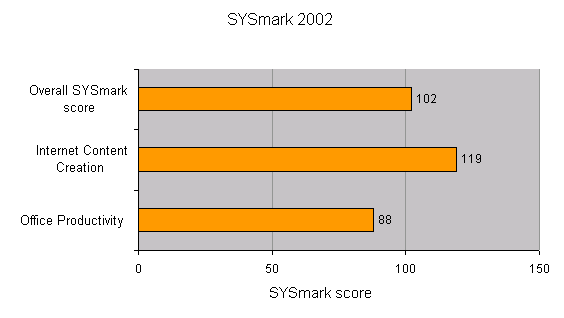
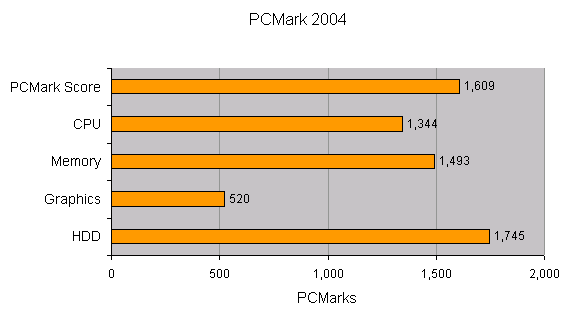
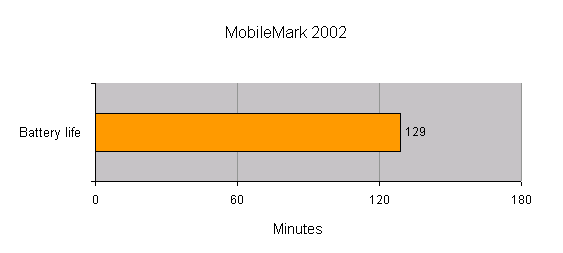
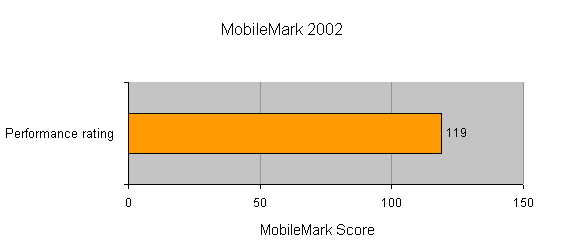
How we test laptops
Unlike other sites, we test every laptop we review thoroughly over an extended period of time. We use industry standard tests to compare features properly. We’ll always tell you what we find. We never, ever, accept money to review a product.
Trusted Score
Score in detail
-
Performance 7
-
Value 9
-
Features 9

